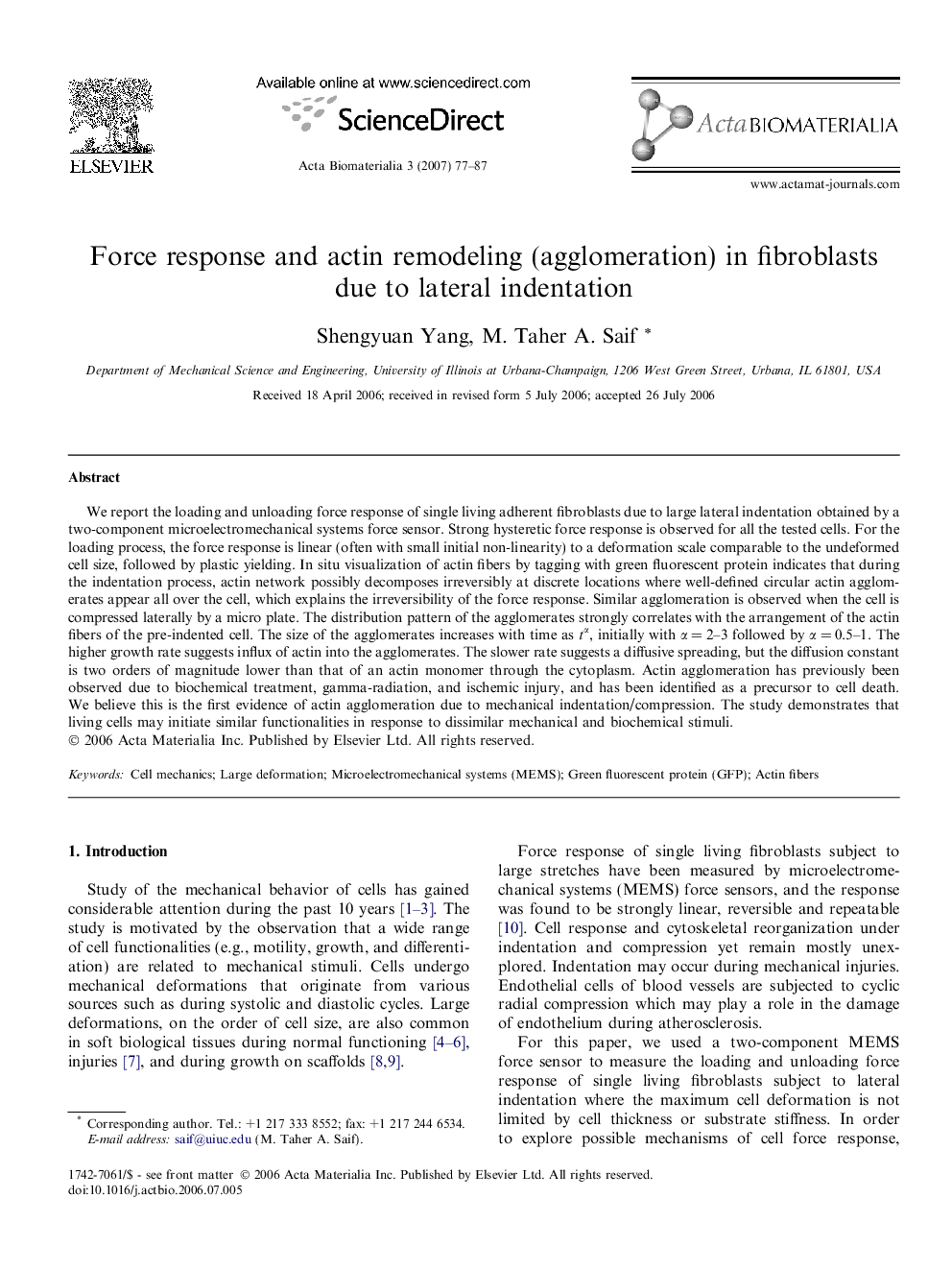| Article ID | Journal | Published Year | Pages | File Type |
|---|---|---|---|---|
| 2569 | Acta Biomaterialia | 2007 | 11 Pages |
We report the loading and unloading force response of single living adherent fibroblasts due to large lateral indentation obtained by a two-component microelectromechanical systems force sensor. Strong hysteretic force response is observed for all the tested cells. For the loading process, the force response is linear (often with small initial non-linearity) to a deformation scale comparable to the undeformed cell size, followed by plastic yielding. In situ visualization of actin fibers by tagging with green fluorescent protein indicates that during the indentation process, actin network possibly decomposes irreversibly at discrete locations where well-defined circular actin agglomerates appear all over the cell, which explains the irreversibility of the force response. Similar agglomeration is observed when the cell is compressed laterally by a micro plate. The distribution pattern of the agglomerates strongly correlates with the arrangement of the actin fibers of the pre-indented cell. The size of the agglomerates increases with time as tα, initially with α = 2–3 followed by α = 0.5–1. The higher growth rate suggests influx of actin into the agglomerates. The slower rate suggests a diffusive spreading, but the diffusion constant is two orders of magnitude lower than that of an actin monomer through the cytoplasm. Actin agglomeration has previously been observed due to biochemical treatment, gamma-radiation, and ischemic injury, and has been identified as a precursor to cell death. We believe this is the first evidence of actin agglomeration due to mechanical indentation/compression. The study demonstrates that living cells may initiate similar functionalities in response to dissimilar mechanical and biochemical stimuli.
